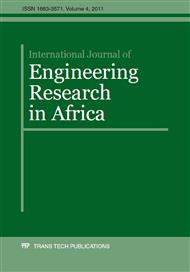p.1
p.15
p.27
p.35
p.59
p.67
p.75
Downscaled Capillary Pressure and Relative Permeability of Small Cores for Network Model Validation
Abstract:
This paper presents the results of drainage capillary pressure and relative permeability measurements made on cores having different bulk volumes ranging from 0.5 to 12 cm3. The aim of the experiments was to provide reliable experimental data which can be used to validate the predictive value of micro-CT based network models for capillary pressure and relative permeability. The micro-CT based network models use realistic networks constructed from the X-ray images of the rock samples having a typical bulk volume of 0.3 cm3. Experimental data for drainage capillary pressure were obtained using the centrifuge technique. The results of the largest cores were verified by the data obtained on the same sample using the porous plate technique. Relative permeability data were obtained by history matching the unsteady state displacement data. Homogeneous model sandstones (Berea and Bentheim) and carbonate (Mt. Gambier) were used in the experiments. Air-brine and oil-brine fluid-systems were used for drainage capillary pressure and relative permeability measurements, respectively. The relative permeability data were compared with those predicted from empirical and geometry based models using capillary pressure data. Good agreement was obtained for the drainage capillary pressure measured on all samples used. The residual saturations obtained from the cores used in the displacement experiments were also in good agreement. The models were found to predict relative permeability of oil and water with varying degrees of success. For water relative permeability, the Pirson model predicts the experimental data successfully while the Corey, Corey-Brooks/Burdine and van Genuchten/Burdine models predict the data of oil relative permeability better than the others. The results demonstrate for the first time that reliable drainage capillary pressure and relative permeability measurements can be made on small model sandstone and carbonate cores of representative scales used in micro-CT-imaging.
Info:
Periodical:
Pages:
15-26
Citation:
Online since:
May 2011
Authors:
Price:
Сopyright:
© 2011 Trans Tech Publications Ltd. All Rights Reserved
Share:
Citation:


